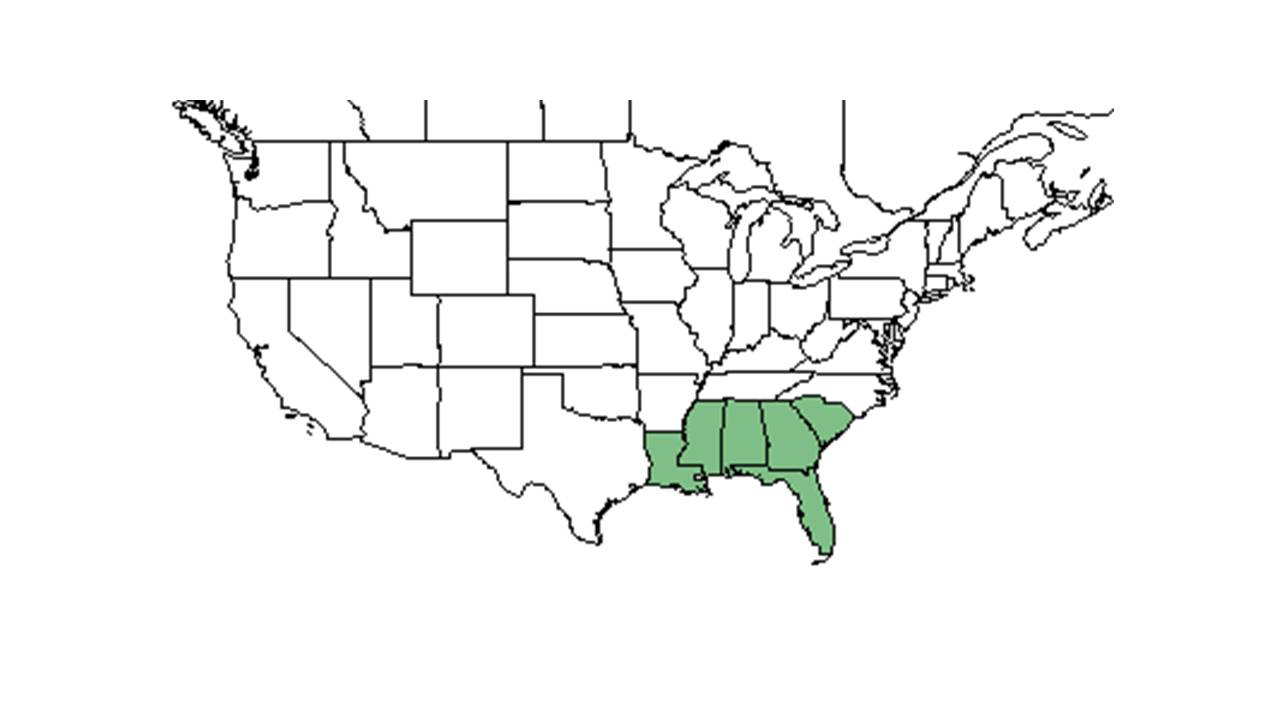Difference between revisions of "Elephantopus elatus"
(Created page with "{{italic title}} <!-- Get the taxonomy information from the NRCS Plants database --> {{taxobox | name = Elephantopus elatus | image = Insert.jpg | image_caption = | regnum =...") |
|||
| Line 22: | Line 22: | ||
==Ecology== | ==Ecology== | ||
===Habitat=== <!--Natural communities, human disturbed habitats, topography, hydrology, soils, light, fire regime requirements for removal of competition, etc.--> | ===Habitat=== <!--Natural communities, human disturbed habitats, topography, hydrology, soils, light, fire regime requirements for removal of competition, etc.--> | ||
| + | It prefers dry soil to wetter soil.<ref name="Glitzenstein et al 2003"/> | ||
| + | It is found in dry flatwoods and sandhill communities.<ref name="Glitzenstein et al 2003"/> Found in sandhills that were consistently higher densities of sandhill plants with showy flowers and higher species richness of sandhill species in the burn than control patches. The most notable difference in the vigor of the flowering response occurred 1 month after the burns and in the fall flowering censuses.<ref>Heuberger, K. A. and F. E. Putz (2003). "Fire in the suburbs: ecological impacts of prescribed fire in small remnants of longleaf pine (Pinus palustris) sandhill." Restoration Ecology 11: 72-81.</ref> | ||
===Phenology=== <!--Timing off flowering, fruiting, seed dispersal, and environmental triggers. Cite PanFlora website if appropriate: http://www.gilnelson.com/PanFlora/ --> | ===Phenology=== <!--Timing off flowering, fruiting, seed dispersal, and environmental triggers. Cite PanFlora website if appropriate: http://www.gilnelson.com/PanFlora/ --> | ||
===Seed dispersal=== | ===Seed dispersal=== | ||
===Seed bank and germination=== | ===Seed bank and germination=== | ||
===Fire ecology=== <!--Fire tolerance, fire dependence, adaptive fire responses--> | ===Fire ecology=== <!--Fire tolerance, fire dependence, adaptive fire responses--> | ||
| + | It responded positively to late winter annual and biennial burns.<ref name="Glitzenstein et al 2003">Glitzenstein, J. S., D. R. Streng, et al. (2003). "Fire frequency effects on longleaf pine (Pinus palustris, P.Miller) vegetation in South Carolina and northeast Florida, USA." Natural Areas Journal 23: 22-37.</ref> | ||
===Pollination=== | ===Pollination=== | ||
===Use by animals=== <!--Herbivory, granivory, insect hosting, etc.--> | ===Use by animals=== <!--Herbivory, granivory, insect hosting, etc.--> | ||
| + | These bees, Azcgochlora pura, Augochlorella aurata, Azegochloropsis metallica, Anthidiellum perplexurn, Megachile albitarsis, M. brevis pseudobrevis, and M. xylocopoides, were found on E. elatus.<ref>Deyrup, M. J. E., and Beth Norden (2002). "The diversity and floral hosts of bees at the Archbold Biological Station, Florida (Hymenoptera: Apoidea)." Insecta mundi 16(1-3).</ref> | ||
===Diseases and parasites=== | ===Diseases and parasites=== | ||
==Conservation and Management== | ==Conservation and Management== | ||
Revision as of 16:11, 10 June 2015
| Elephantopus elatus | |
|---|---|

| |
| Scientific classification | |
| Kingdom: | Plantae |
| Division: | Magnoliophyta - Flowering plants |
| Class: | Magnoliopsida – Dicotyledons |
| Order: | Asterales |
| Family: | Asteraceae ⁄ Compositae |
| Genus: | Elephantopus |
| Species: | E. elatus |
| Binomial name | |
| Elephantopus elatus Bertol. | |

| |
| Natural range of Elephantopus elatus from USDA NRCS Plants Database. | |
Contents
Description
Distribution
Ecology
Habitat
It prefers dry soil to wetter soil.[1] It is found in dry flatwoods and sandhill communities.[1] Found in sandhills that were consistently higher densities of sandhill plants with showy flowers and higher species richness of sandhill species in the burn than control patches. The most notable difference in the vigor of the flowering response occurred 1 month after the burns and in the fall flowering censuses.[2]
Phenology
Seed dispersal
Seed bank and germination
Fire ecology
It responded positively to late winter annual and biennial burns.[1]
Pollination
Use by animals
These bees, Azcgochlora pura, Augochlorella aurata, Azegochloropsis metallica, Anthidiellum perplexurn, Megachile albitarsis, M. brevis pseudobrevis, and M. xylocopoides, were found on E. elatus.[3]
Diseases and parasites
Conservation and Management
Cultivation and restoration
References and notes
Photo Gallery
- ↑ 1.0 1.1 1.2 Glitzenstein, J. S., D. R. Streng, et al. (2003). "Fire frequency effects on longleaf pine (Pinus palustris, P.Miller) vegetation in South Carolina and northeast Florida, USA." Natural Areas Journal 23: 22-37.
- ↑ Heuberger, K. A. and F. E. Putz (2003). "Fire in the suburbs: ecological impacts of prescribed fire in small remnants of longleaf pine (Pinus palustris) sandhill." Restoration Ecology 11: 72-81.
- ↑ Deyrup, M. J. E., and Beth Norden (2002). "The diversity and floral hosts of bees at the Archbold Biological Station, Florida (Hymenoptera: Apoidea)." Insecta mundi 16(1-3).